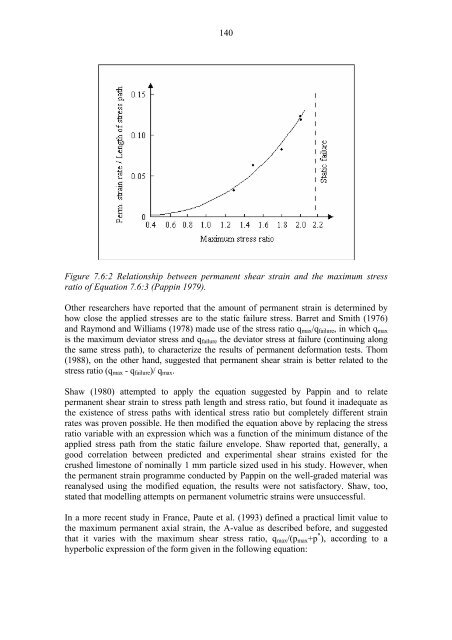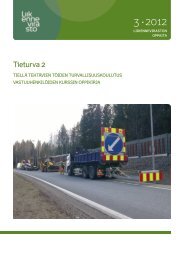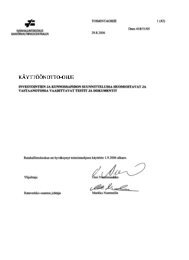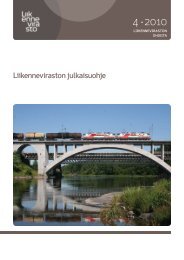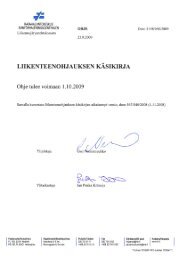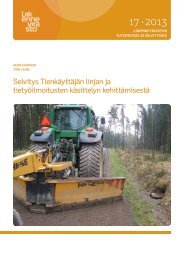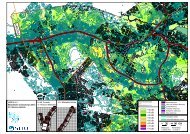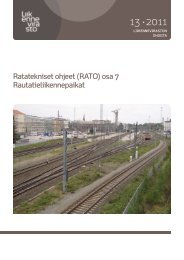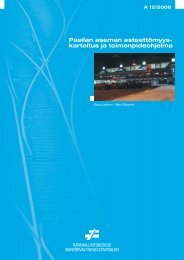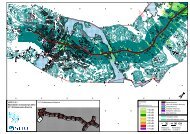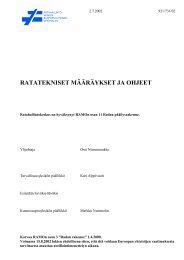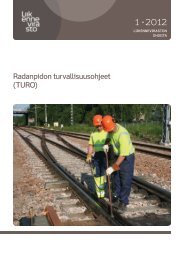Deformation behaviour of railway embankment ... - Liikennevirasto
Deformation behaviour of railway embankment ... - Liikennevirasto
Deformation behaviour of railway embankment ... - Liikennevirasto
You also want an ePaper? Increase the reach of your titles
YUMPU automatically turns print PDFs into web optimized ePapers that Google loves.
140<br />
Figure 7.6:2 Relationship between permanent shear strain and the maximum stress<br />
ratio <strong>of</strong> Equation 7.6:3 (Pappin 1979).<br />
Other researchers have reported that the amount <strong>of</strong> permanent strain is determined by<br />
how close the applied stresses are to the static failure stress. Barret and Smith (1976)<br />
and Raymond and Williams (1978) made use <strong>of</strong> the stress ratio q max /q failure , in which q max<br />
is the maximum deviator stress and q failure the deviator stress at failure (continuing along<br />
the same stress path), to characterize the results <strong>of</strong> permanent deformation tests. Thom<br />
(1988), on the other hand, suggested that permanent shear strain is better related to the<br />
stress ratio (q max - q failure )/ q max .<br />
Shaw (1980) attempted to apply the equation suggested by Pappin and to relate<br />
permanent shear strain to stress path length and stress ratio, but found it inadequate as<br />
the existence <strong>of</strong> stress paths with identical stress ratio but completely different strain<br />
rates was proven possible. He then modified the equation above by replacing the stress<br />
ratio variable with an expression which was a function <strong>of</strong> the minimum distance <strong>of</strong> the<br />
applied stress path from the static failure envelope. Shaw reported that, generally, a<br />
good correlation between predicted and experimental shear strains existed for the<br />
crushed limestone <strong>of</strong> nominally 1 mm particle sized used in his study. However, when<br />
the permanent strain programme conducted by Pappin on the well-graded material was<br />
reanalysed using the modified equation, the results were not satisfactory. Shaw, too,<br />
stated that modelling attempts on permanent volumetric strains were unsuccessful.<br />
In a more recent study in France, Paute et al. (1993) defined a practical limit value to<br />
the maximum permanent axial strain, the A-value as described before, and suggested<br />
that it varies with the maximum shear stress ratio, q max /(p max +p * ), according to a<br />
hyperbolic expression <strong>of</strong> the form given in the following equation:


